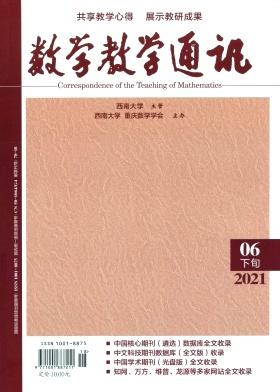First fundamental theorem of calculus: How do engineering students interpret and apply it? / Primer teorema fundamental del cálculo: ¿cómo lo interpretan y aplican estudiantes de ingeniería?
引用次数: 0
Abstract
The first fundamental theorem of calculus relates differential and integral calculus, one of its important aspects according to Bressoud (2011) is that it shows the existence of two ways of calculating an integral: with the limit of a Riemann sum and by an antiderivative. Larsen, Marrongelle, Bressoud and Graham (2017) indicate that calculus is a barrier to the academic progress of many students and that there is a need for research that seeks to develop proposals for instruction to improve the understanding of its concepts. Therefore, with the idea of carrying out this type of research in the future, the present study seeks to identify the common interpretation of the first theorem of calculus and whether it is useful in solving contextual problems. Answering these questions will provide some elements to develop a proposal for instruction. This study involved 18 students between the ages of 18 and 21 from engineering careers at a university located in Mexico City, who had completed a calculus course. The instrument was a set of three problems, in two, we propose contextual situations that can be solved by applying the first fundamental theorem of the calculus or by performing integration and derivation operations (one situation is about the ratio of change of the volume of water contained in a tank, with respect to time, where water falls to a variable ratio; the other is about the ratio of change of the volume of water contained in a cylindrical tank with respect to the height of water). In the last problem, the same type of situation is posed in abstract form: If F(x) = f t dt ! ! , obtain F′(x), justify your answer.First theorem of calculus: How do engineering students基本解释和apply it ?/微积分的第一个基本定理:工程专业学生如何解释和应用它?
微积分的第一个基本定理与微分和积分有关,根据Bressoud(2011)的说法,它的一个重要方面是它表明存在两种计算积分的方法:用黎曼和的极限和用不定积分。Larsen, Marrongelle, Bressoud和Graham(2017)指出,微积分是许多学生学业进步的障碍,需要进行研究,寻求制定教学建议,以提高对其概念的理解。因此,在未来开展这类研究的想法下,本研究试图确定微积分第一定理的共同解释,以及它是否有助于解决上下文问题。回答这些问题将提供一些元素,以制定指导建议。这项研究涉及18名年龄在18到21岁之间的学生,他们来自墨西哥城的一所大学,从事工程工作,他们完成了微积分课程。该仪器是一组三个问题,其中两个,我们提出了上下文情况,可以通过应用微积分的第一基本定理或通过执行积分和求导操作来解决(一个情况是关于水箱中水的体积变化的比例,相对于时间,其中水下降到一个可变的比例;另一个是关于圆柱形水箱中水的体积与水的高度的变化率。在最后一个问题中,同样的情况以抽象的形式提出:如果F(x) = F t dt !! ,得到F ' (x),证明你的答案。
本文章由计算机程序翻译,如有差异,请以英文原文为准。
求助全文
约1分钟内获得全文
求助全文

 求助内容:
求助内容: 应助结果提醒方式:
应助结果提醒方式:


